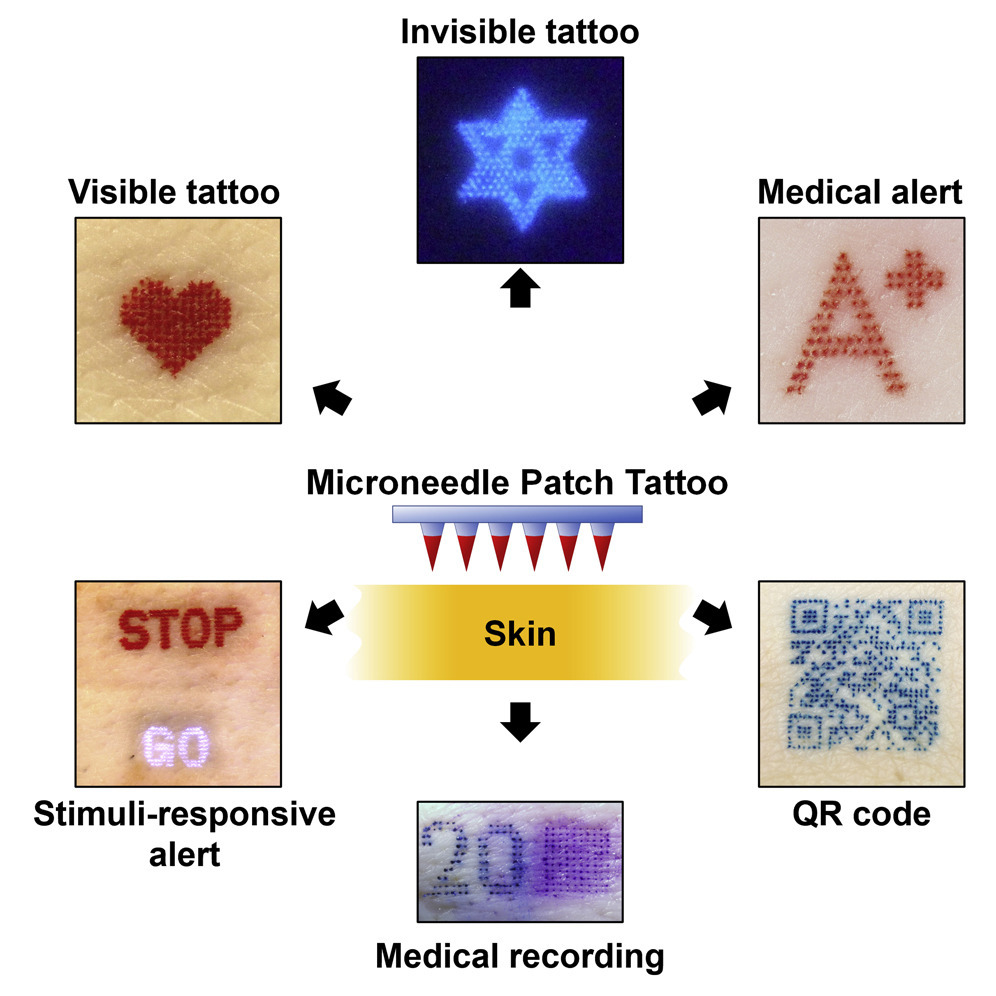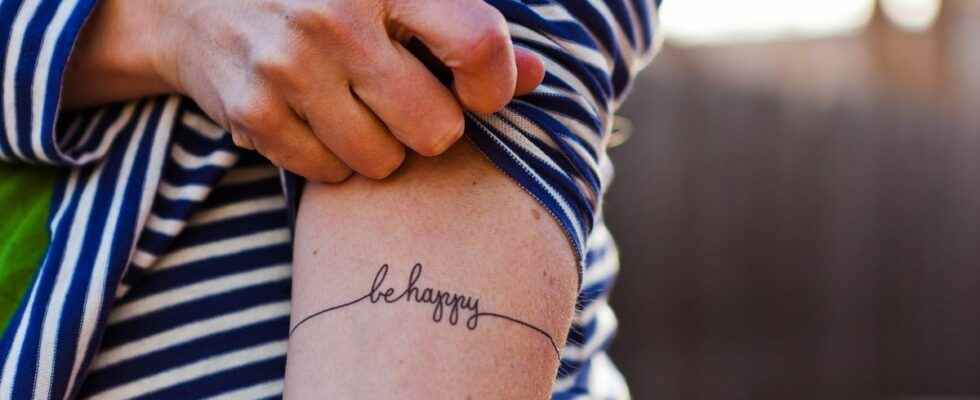Published on
Updated
Reading 3 mins.
Faster and painless thanks to the use of micro-needles, this way of tattooing could offer new possibilities, in the medical field in particular.
Is a tattoo without any pain really a tattoo? No, will no doubt grumble the regulars of tattoo parlors. But a team of scientists from the Georgia Institute of Technology has just demonstrated that a tattoo could be quick and painless, thanks to the invention of a patch printing a pattern on the skin using needles. microscopic. Their invention was published on September 14 in the journal iScience.
Microneedles in action
How does this tattoo work? Concretely, the device created is a patch made of micro-needles, smaller than grains of sand. These are made of ink, of any color, and dissolve directly into the skin.
According to the team of scientists, it is possible to create the shape, symbol or phrase of your choice. The technique also causes no pain or bleeding, unlike the usual large tattoo needles, which pierce the skin between 50 and 3,000 times per minute. Another advantage: these tattoos can be permanent or temporary, leaving more freedom of choice to the person concerned and could even be applied by the user himself.

A medical interest in the first place
The point of a tattoo done without any pain may seem superficial. The discovery is nevertheless a step forward, especially in the medical field where tattooing is now an integral part of care and repair. To date, tattooing is indeed used for several therapeutic purposes:
- To conceal scars;
- Guide repeated radiotherapy treatments;
- Restoring a nipple after breast surgery;
- It is also being studied to communicate about serious medical conditions like diabetes, epilepsy or allergies.
The research team does not intend to stop there: in its study, it evokes new possibilities, such as using tattoos that react to light and heat with glucose-sensitive materials that change color to signal the blood sugar levels for people with diabetes.
But an invention that knows its limits
Consulted on the subject, Alexia Cassar, the first European tattoo artist trained in the technique of 3D tattoo reconstruction after breast cancer, is however not convinced by the technique, for several reasons.
“The application of these patches equipped with micro-needles is a great promise of ease of application and reduction of tattoo work time, but we must remain cautious about medical application for human purposes for several reasons” she warns.
First of all, on the notion of medical secrecy endangered by the tattoo “if it is intended to prevent diseases or medical conditions in an emergency situation, it must be remembered that medical secrecy is then broken and that this can pose regulatory problems in certain countries” fear the artist. In addition, certain medical conditions make tattooing unsuitable for reasons of increased infectious risks and/or delayed healing, according to her. This is the case for certain types of diabetes or autoimmune diseases, which can also be reactivated even remotely in the event of a tattoo.
Finally, with regard to tattooing aimed at covering scars, its application being already much debated in terms of the lifespan of labile medical pigments, it seems risky to be able to match human know-how in the choice of colors. adapted to each skin tone and each scar area, and the result will inevitably have a “patch” appearance even more unsightly than the scar itself. “It is better to trust the expert tattoo artists in this field who exercise with expertise and delicacy on these compromised and fragile tissues” she confirms.
The technique is to be followed for what it can bring positively, but it will never replace the expertise and the artistic approach of a true tattoo artist.
